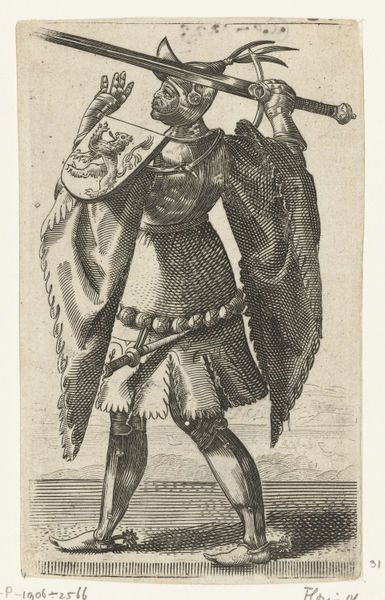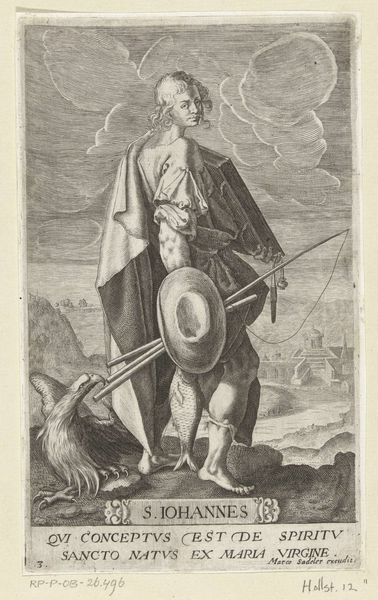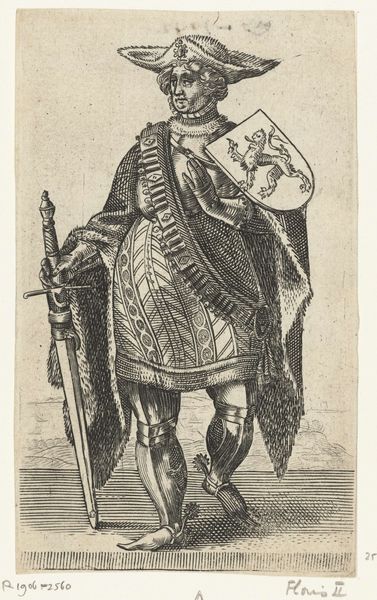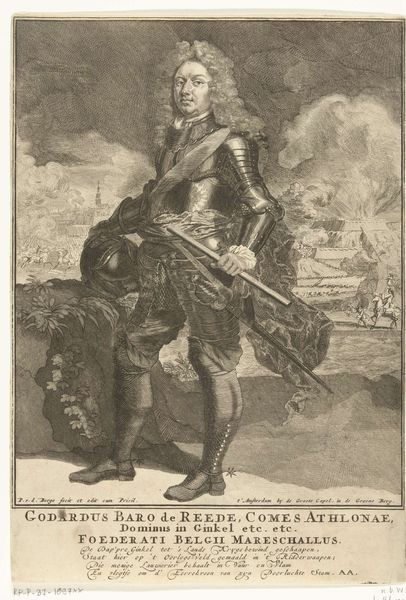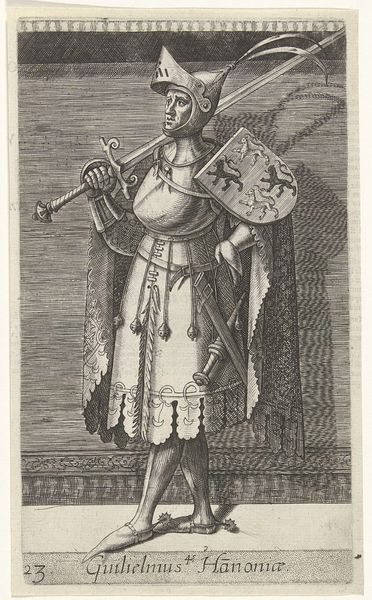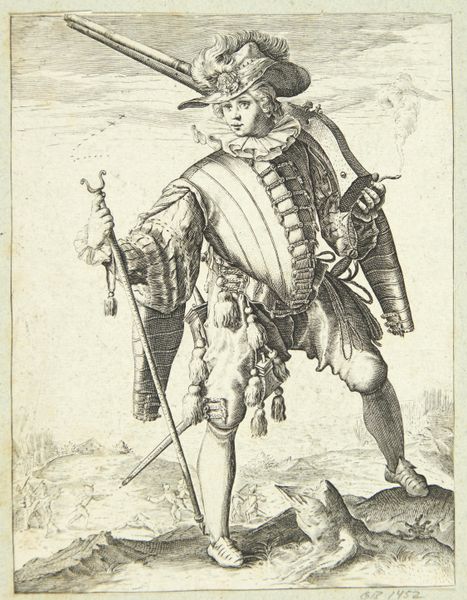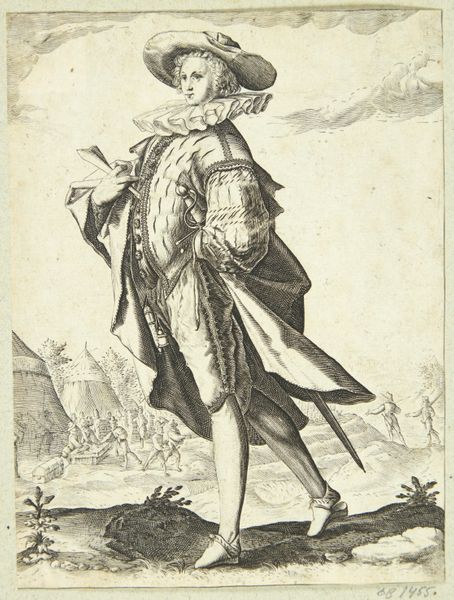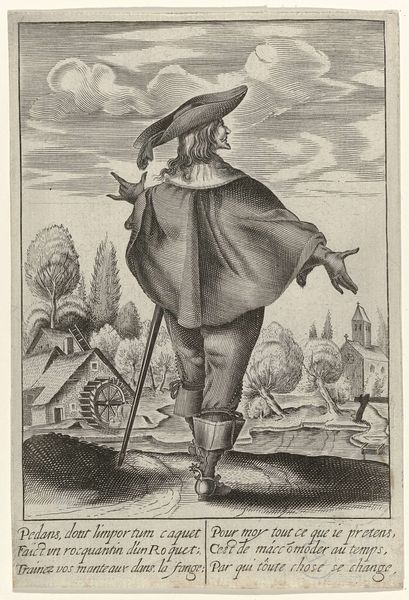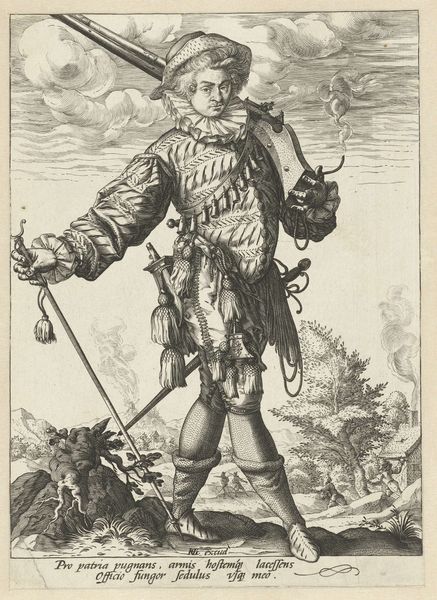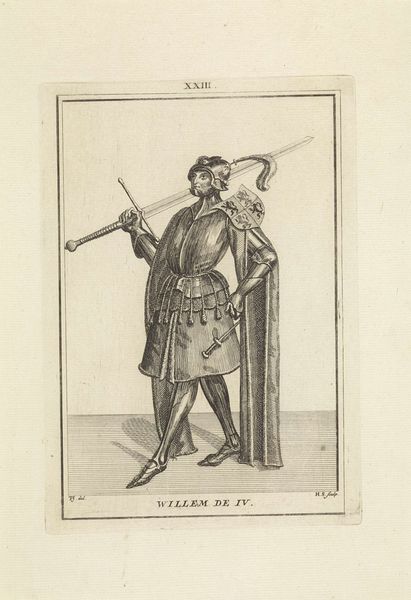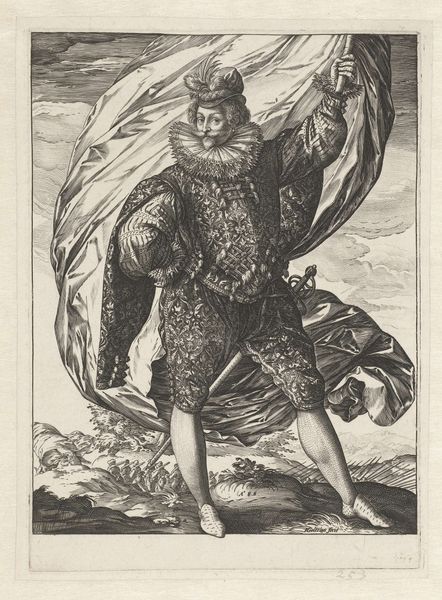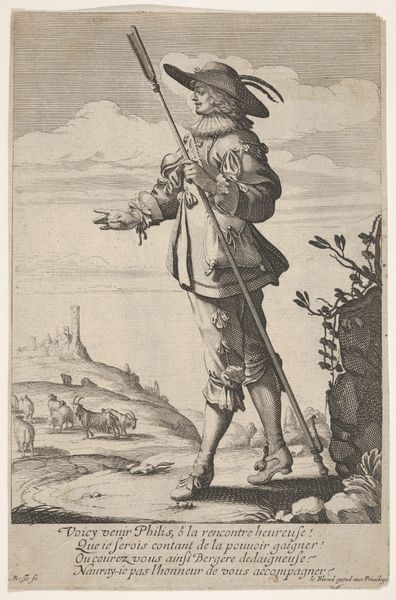
print, engraving
#
baroque
# print
#
figuration
#
history-painting
#
engraving
Dimensions: height 205 mm, width 123 mm
Copyright: Rijks Museum: Open Domain
Editor: Here we have an engraving from sometime between 1591 and 1629, titled "Apostel Jakobus de Meerdere (Jacobus Maior) als pelgrim," or Apostle James the Greater as a Pilgrim, attributed to Johan Barra. I'm struck by how deliberately staged it feels; he is almost posing mid-stride. What stands out to you in this image? Curator: What strikes me is how this print participates in the Catholic Reformation's visual program. The figure of St. James, elaborately costumed as a pilgrim, wasn't simply a religious icon. He becomes a carefully constructed advertisement for pilgrimage itself, reinforcing the importance of sacred journeys at a time when Protestant theology was challenging these practices. Editor: An advertisement, really? Curator: Yes, think of it. Pilgrimages were not just personal spiritual quests. They were deeply entangled with economics, politics, and the very structure of the Catholic Church. By depicting James in such detail, with the trappings of his journey – staff, hat, water gourd – the image visually legitimizes and encourages participation in pilgrimage. Consider the cities visible in the background. How are those real pilgrimage destinations, such as Santiago de Compostela, being visually promoted? Editor: So it’s not just about faith, but about the institution? Curator: Precisely. It's about reinforcing Catholic traditions, visually countering the critiques of the Protestant Reformation and asserting the continued significance of the Church's practices and structures in everyday life. This print becomes part of that wider cultural and political battle. Editor: I never thought of religious art as a form of political messaging! This definitely gives me a new way of looking at art.
Comments
No comments
Be the first to comment and join the conversation on the ultimate creative platform.
